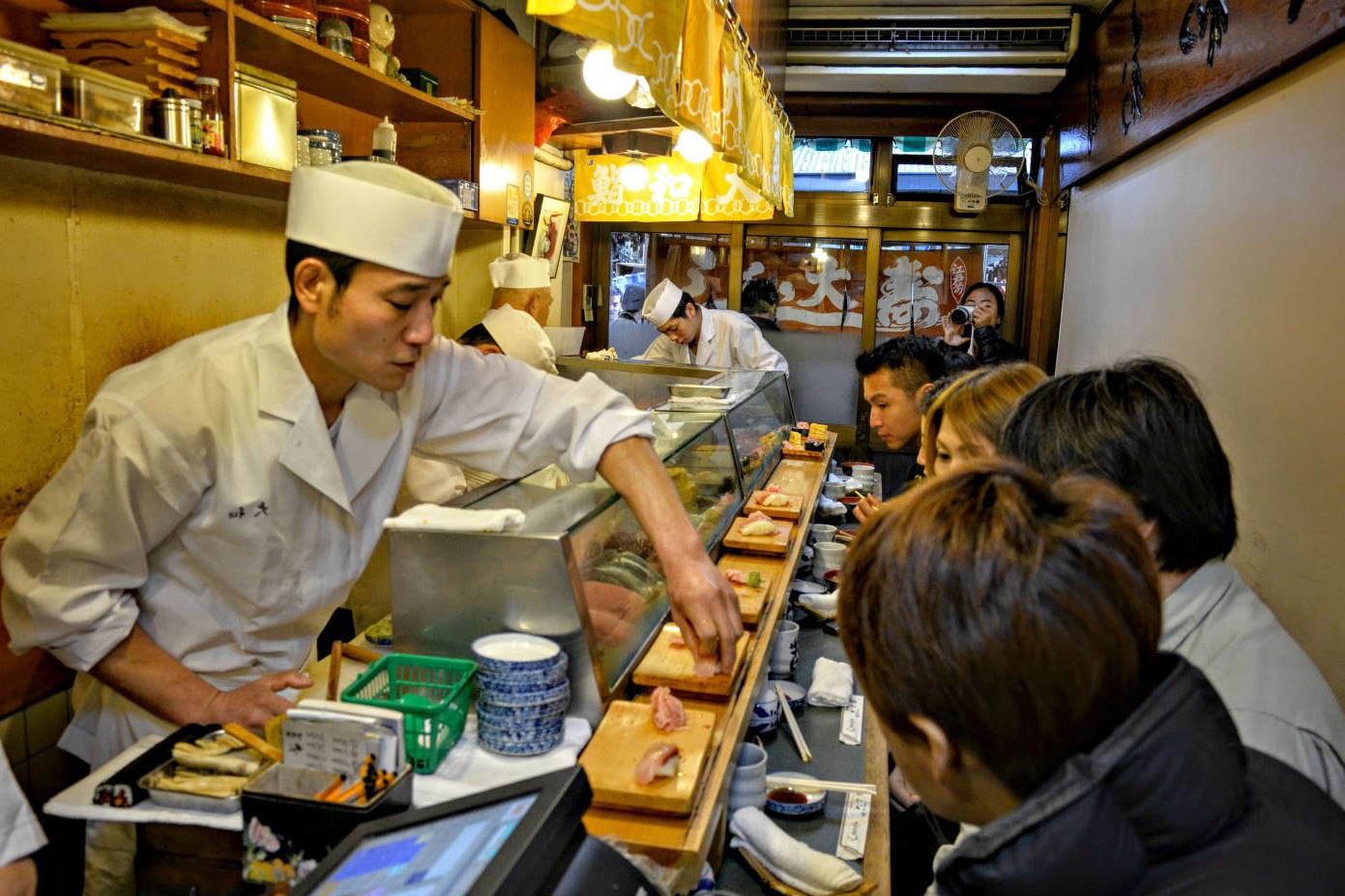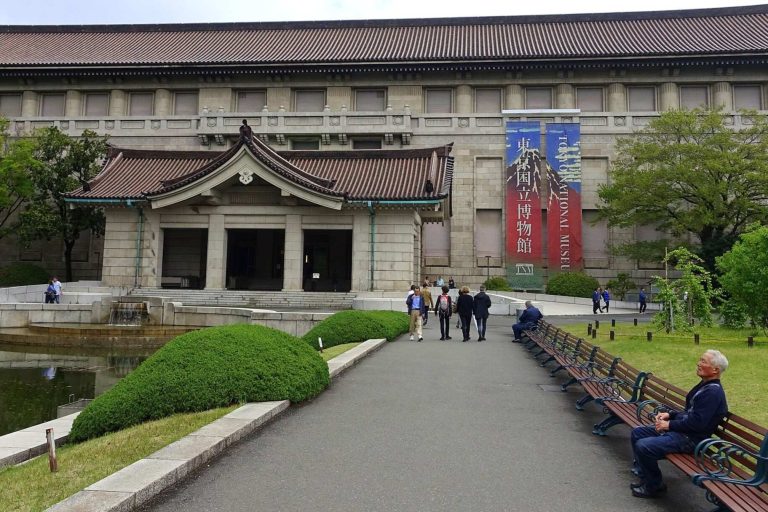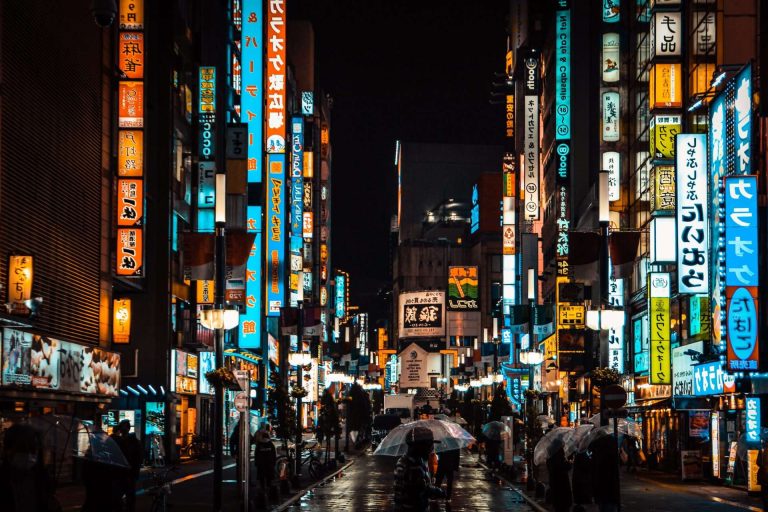A Culinary Paradise in the Heart of Tokyo
Tsukiji Market stands as Tokyo’s legendary food destination, earning its reputation as Japan’s ultimate ‘Food Town.’ This bustling marketplace offers visitors an authentic taste of Japanese culinary culture through its vibrant mix of wholesale shops, retail vendors, and exceptional restaurants. While the famous tuna auctions relocated to Toyosu Market in 2018, the Tsukiji Outer Market continues to thrive, welcoming food enthusiasts from around the world with its incredible array of fresh seafood, traditional delicacies, and unforgettable street food experiences. The market’s unique atmosphere combines the energy of professional food vendors with the accessibility of tourist-friendly offerings, creating a perfect balance for anyone seeking to experience authentic Japanese food culture. From early morning until noon, the market buzzes with activity as vendors prepare their finest selections and visitors queue for legendary sushi breakfasts and rare culinary treasures.
History of Tsukiji Market
Origins and Development
The story of Tsukiji Market begins with ambitious land reclamation efforts in 1657, when the Tokugawa shogunate transformed marshy coastal areas into usable land. This reclaimed territory, whose name literally translates to ‘built land,’ would eventually become one of the world’s most famous food markets. The area’s transformation into a major commercial hub occurred gradually, with various industries establishing themselves in the newly created space. By the early 20th century, the foundations were laid for what would become Japan’s most significant fish market, setting the stage for decades of culinary excellence and innovation.
Evolution Post-1923 Earthquake
The devastating Great Kanto Earthquake of 1923 marked a pivotal moment in Tsukiji’s history, forcing the relocation of Tokyo’s central fish market from its original location in Nihonbashi. This massive upheaval created an opportunity for Tsukiji to emerge as the new center of Tokyo’s seafood trade. By 1935, the market had officially established itself as a major fish market, complete with professional wholesale operations and supporting businesses. The relocation brought together experienced fishmongers, skilled sushi chefs, and seafood specialists, creating a concentrated hub of culinary expertise that would define Japanese food culture for generations to come.
Significance in Japanese Culinary Culture
Tsukiji Market’s influence extends far beyond simple commerce, serving as the beating heart of Japan’s seafood culture and culinary traditions. The market became the standard-bearer for freshness, quality, and expertise in fish handling, with its vendors developing legendary reputations for selecting the finest specimens. Professional chefs from across Japan would make pilgrimages to Tsukiji to source ingredients and learn from master fishmongers. The market’s role in preserving traditional preparation methods while adapting to modern demands helped maintain the authenticity of Japanese cuisine even as it gained international recognition.
Exploring the Tsukiji Outer Market
Layout and Accessibility
The Tsukiji Outer Market’s compact layout makes it surprisingly easy to navigate despite its bustling atmosphere. Located conveniently near both Tsukiji Shijo Station and Tsukiji Station, the market connects seamlessly to Tokyo’s extensive subway system. The narrow streets and alleys create an intimate shopping experience where visitors can easily walk from vendor to vendor, sampling specialties and discovering hidden gems. The market’s design encourages exploration, with main thoroughfares leading to smaller side streets filled with specialized shops and family-run establishments that have operated for generations.
Operating Hours and Best Times to Visit
Timing your visit to Tsukiji requires understanding the market’s unique rhythm, as most establishments operate from 5:00 AM to 2:00 PM, closing on Sundays and holidays. Early morning visits offer the most authentic experience, when the market buzzes with professional activity and the freshest selections are available. The period between 8:00 AM and 11:00 AM provides the perfect balance of activity and accessibility for tourists. Arriving early also means shorter queues at popular sushi restaurants and better availability of specialty items that often sell out by midday.
Diverse Shopping Experience
The market offers an incredible variety of products extending far beyond fresh seafood to include processed fish, premium meats, seasonal vegetables, dried foods, traditional seasonings, and authentic Japanese delicacies. Visitors can purchase everything from professional-grade kitchen knives to rare sake varieties, creating a comprehensive culinary shopping experience. Many vendors offer smaller portions specifically designed for individual customers rather than bulk wholesale buyers, making it accessible for tourists who want to sample authentic ingredients without committing to large quantities.
Culinary Delights of Tsukiji
Top Street Foods to Try
Tsukiji’s street food scene represents some of Tokyo’s most authentic and delicious offerings, with vendors perfecting their specialties over decades. Must-try items include the famous organ miso stew, which combines rich flavors with traditional preparation methods, and the incredibly fresh sea urchin (uni) served at its peak quality. Grilled eel skewers showcase the art of Japanese grilling techniques, while corn fishcake skewers offer a unique twist on familiar flavors. The market’s large, plump oysters are legendary among seafood lovers, often prepared with minimal seasoning to highlight their natural briny sweetness.
Signature Seafood Dishes
The market’s seafood offerings represent the pinnacle of Japanese marine cuisine, with vendors specializing in specific types of fish and preparation methods. Fresh sushi and chirashi bowls showcase the market’s incredible fish quality, often featuring varieties rarely found elsewhere. Blowtorched scallops demonstrate the technical skill of Tsukiji’s vendors, creating perfectly caramelized surfaces while maintaining tender, sweet interiors. The market’s tempura offerings feature the freshest possible seafood, prepared with light, crispy batters that complement rather than mask the natural flavors of premium ingredients.
Non-Seafood Offerings
While seafood dominates Tsukiji’s reputation, the market also excels in non-marine culinary delights that showcase Japan’s broader food culture. The famous sweet tamago omelet represents a perfect balance of technique and flavor, often served as a palate cleanser between seafood tastings. High-quality matcha ice cream provides a refreshing contrast to the market’s savory offerings, made with premium tea powder that delivers authentic Japanese flavors. Various meat dishes, seasonal vegetables, and traditional sweets round out the market’s diverse culinary landscape.
Cooking Demonstrations and Tastings
Many vendors at Tsukiji offer interactive experiences that go beyond simple purchasing, including live cooking demonstrations and guided tastings. These educational opportunities allow visitors to learn traditional Japanese food preparation techniques directly from master craftsmen. Knife skills demonstrations showcase the precision required for proper fish preparation, while seasoning workshops reveal the subtle art of flavor balancing. These experiences provide invaluable insights into Japanese culinary philosophy and techniques that visitors can apply in their own kitchens.
Dining Options in Tsukiji
Sushi Restaurants
Tsukiji’s sushi restaurants represent some of Tokyo’s finest establishments, with legendary venues like Udatsu Sushi setting standards for excellence throughout the city. These restaurants benefit from immediate access to the market’s freshest fish, often purchasing ingredients just hours before service. The intimate counter seating allows diners to watch master sushi chefs at work, creating an educational dining experience alongside exceptional food. Many establishments offer both traditional omakase experiences and more accessible options for international visitors, ensuring everyone can enjoy world-class sushi in its most authentic setting.
Kaiseki Dining
For those seeking the ultimate in Japanese fine dining, establishments like Waketokuyama offer traditional kaiseki experiences that showcase seasonal ingredients and centuries-old preparation techniques. These multi-course meals represent the pinnacle of Japanese culinary artistry, with each dish carefully designed to complement the others while highlighting specific ingredients and cooking methods. The proximity to Tsukiji Market ensures that these restaurants can source the absolute finest ingredients, creating kaiseki experiences that truly represent the best of Japanese cuisine.
Casual Eateries and Food Stalls
The market’s casual dining options provide accessible ways to experience Tsukiji’s culinary excellence without the formality or expense of high-end restaurants. Street-side stalls offer quick, delicious meals perfect for exploring the market while sampling various specialties. Family-run establishments serve generous portions of comfort food favorites, often featuring recipes passed down through generations. These casual options allow visitors to experience the market’s authentic atmosphere while enjoying exceptional food in a relaxed setting.
Accommodation Near Tsukiji Market
Budget Guesthouses
Budget-conscious travelers can find excellent accommodation options near Tsukiji, with guesthouses like Mokkoan offering authentic Japanese hospitality at affordable prices. These establishments often feature traditional Japanese design elements and communal spaces that encourage interaction with other travelers. The proximity to the market allows guests to experience early morning market visits and enjoy fresh breakfast options just steps from their accommodation. Many budget options include basic amenities while maintaining the cleanliness and service standards Japan is famous for.
Mid-Range Hotels
Mid-range accommodations such as SOLA HOTEL and cyashitsu ryokan provide comfortable stays with additional amenities and services while maintaining reasonable pricing. These establishments often feature modern conveniences combined with traditional Japanese design elements, creating a perfect balance for international visitors. The location near Tsukiji provides easy access to both the market and other Tokyo attractions, making these hotels ideal bases for exploring the city. Many mid-range options include breakfast services featuring local specialties and ingredients sourced from nearby markets.
Luxury Accommodations
Luxury travelers can choose from premium options like The Okura Tokyo and ulu Tokyo, which offer world-class service and amenities in close proximity to the market. These establishments provide sophisticated dining options, spa services, and concierge assistance for arranging special market experiences. The luxury accommodations often feature rooms with views of Tokyo Bay and the city skyline, creating memorable stays that complement the culinary adventures available at Tsukiji. Many luxury hotels offer specialized packages that include guided market tours and exclusive dining experiences.
Visiting Tips for Tsukiji Market
Navigating the Market
Successful navigation of Tsukiji requires understanding the market’s layout and flow patterns to avoid crowds and find the best vendors. Starting with the main thoroughfares and gradually exploring smaller side streets allows visitors to get oriented while discovering hidden gems. Carrying a small map and learning basic Japanese phrases for food items can enhance the experience significantly. The market’s compact size means that getting lost is rarely a serious problem, and most vendors are helpful to visitors who show genuine interest in their products.
Best Practices for Food Sampling
Food sampling at Tsukiji requires respect for vendors’ time and products, as well as understanding of basic etiquette for trying unfamiliar items. Purchasing something from vendors who offer samples shows appreciation for their generosity and helps support the market’s continued operation. Trying small portions of various items allows for a broader culinary experience without overwhelming the palate or stomach. Staying hydrated and pacing consumption throughout the visit ensures maximum enjoyment of the market’s incredible variety.
Cultural Etiquette
Respecting Japanese cultural norms enhances the Tsukiji experience for both visitors and vendors, creating positive interactions that benefit everyone involved. Speaking quietly, avoiding blocking narrow walkways, and showing appreciation for vendors’ expertise demonstrates cultural sensitivity. Learning basic Japanese greetings and thank-you phrases shows respect for local customs and often results in warmer interactions with market vendors. Understanding that many vendors are serious professionals who take pride in their work helps visitors approach the market with appropriate respect and curiosity.
Continuing the Tsukiji Experience
Nearby Attractions
The area surrounding Tsukiji offers numerous attractions that complement a market visit, creating opportunities for full-day Tokyo explorations. The upscale Ginza luxury shopping and dining district lies just minutes away, providing a stark contrast to the market’s traditional atmosphere. For those interested in traditional culture, the historic Asakusa temples and markets offer authentic Japanese architecture and spiritual experiences. The modern Odaiba seaside and entertainment complex provides family-friendly activities and stunning views of Tokyo Bay, perfect for afternoon relaxation after morning market adventures.
Local Events and Festivals
Throughout the year, the Tsukiji area hosts various events and festivals that celebrate Japanese food culture and local traditions. Seasonal festivals often feature special market offerings, cooking demonstrations, and cultural performances that provide deeper insights into Japanese culinary heritage. These events offer unique opportunities to experience the market’s community atmosphere and learn about traditional celebrations that have shaped Japanese food culture for centuries.
Further Culinary Adventures
Visitors inspired by their Tsukiji experience can continue their culinary journey throughout Tokyo and beyond, with the market serving as an excellent introduction to Japanese food culture. Exploring other Tokyo food districts, taking cooking classes, or visiting regional markets throughout Japan can build upon the knowledge and appreciation gained at Tsukiji. The market’s influence on Japanese cuisine makes it an ideal starting point for understanding the broader culinary landscape of Japan, from traditional preparations to modern innovations that continue to evolve Japanese food culture.
Frequently Asked Questions
What are the best times to visit Tsukiji Market?
The best times to visit are early morning, from 5:00 AM to 2:00 PM, with peak activity between 8:00 AM and 11:00 AM for tourists.
What types of food can I find at Tsukiji Market?
Tsukiji Market offers a wide range of food including fresh seafood, street food, kaiseki dining, and non-seafood options like sweet tamago and matcha ice cream.
How can I navigate Tsukiji Market effectively?
Understanding the market’s layout, starting from main thoroughfares, and being respectful of vendors and other visitors will enhance your experience.
Are there nearby attractions to explore after visiting Tsukiji Market?
Yes, nearby attractions include the upscale Ginza district, historic Asakusa temples, and the modern Odaiba seaside complex.
What cultural etiquette should I observe while visiting Tsukiji?
Speak quietly, avoid blocking walkways, show appreciation for vendors, and learn basic Japanese greetings to enhance interactions.
Embarking on a Culinary Journey at Tsukiji
A visit to Tsukiji Market is not just about tasting exquisite food; it’s an immersive journey into the heart of Japanese culinary traditions. From the vibrant atmosphere to the rich history and diverse offerings, Tsukiji serves as a gateway to understanding and appreciating the nuances of Japanese cuisine. Whether you’re sampling street food or dining at esteemed sushi restaurants, the market promises an unforgettable experience that resonates with both locals and tourists.





